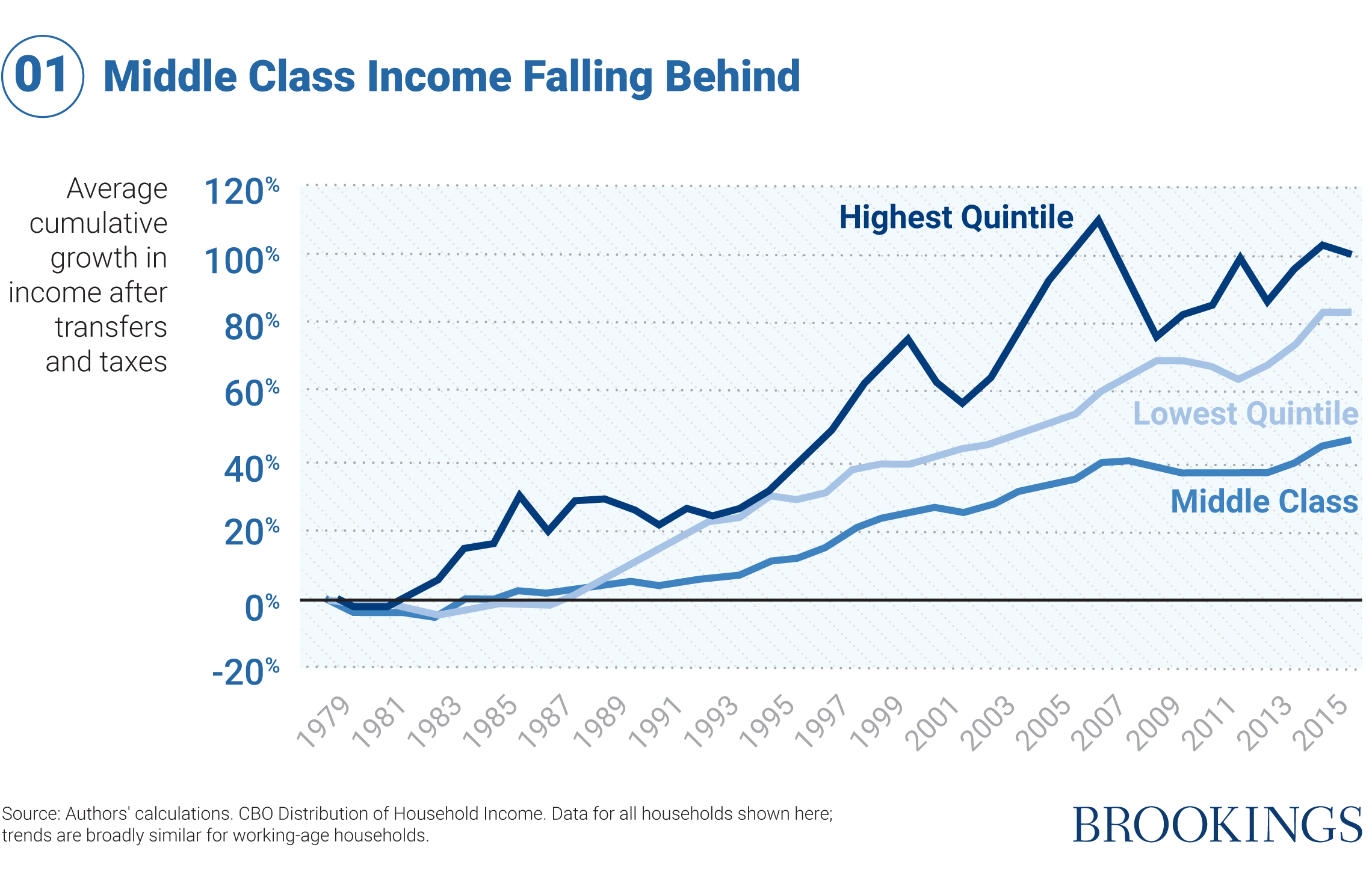In this edition of Charts of the Week: COVID-19’s impact on the federal debt and renters’ ability to pay; plus the middle-class income growth decline.
COVID-19 AND THE FEDERAL DEBT
In a paper discussed at this week’s Brookings Papers on Economic Activity (BPEA) conference, the authors (Alan Auerbach, William Gale, Byron Lutz, and Louise Sheiner) conclude that “the federal deficit temporarily ballooned in response to the COVID-19 pandemic, but remarkably low interest rates, expected to continue for much of the coming decade, mean the long-term budget outlook is only moderately worse now.” Still, say the authors, the accumulated federal debt is expected to exceed 100 percent of the federal budget next year.
PREDICTING WHETHER RENTERS WILL DEFAULT
Jenny Schuetz notes the lack of real-time data on the problem of renters in financial trouble because of the COVID-19 pandemic, but describes new research that shows how answers to a weekly Census Bureau survey might help predict whether renter households will be able to pay next month’s rent. The chart above depicts the results the survey and rent-paying outcomes for one period earlier this year. Schuetz argues that policymakers need better real-time data to measure housing distress.
MIDDLE-CLASS INCOME GROWTH OUTPACED BY BOTH TOP AND BOTTOM

In A New Contract with the Middle Class, Isabel Sawhill and Richard Reeves observe that “The household incomes in the middle 60 percent of the distribution have grown only about half as fast as those in the bottom and top 20 percent, once taxes and transfers are taken into account.” Dive into the Contract to learn why Money, Time, Relationships, Health, and Respect are the five pillars of the good life, and also why the American Dream is becoming harder to achieve for so many.

Commentary
Charts of the Week: Federal debt, middle-class income, rental housing distress
September 25, 2020